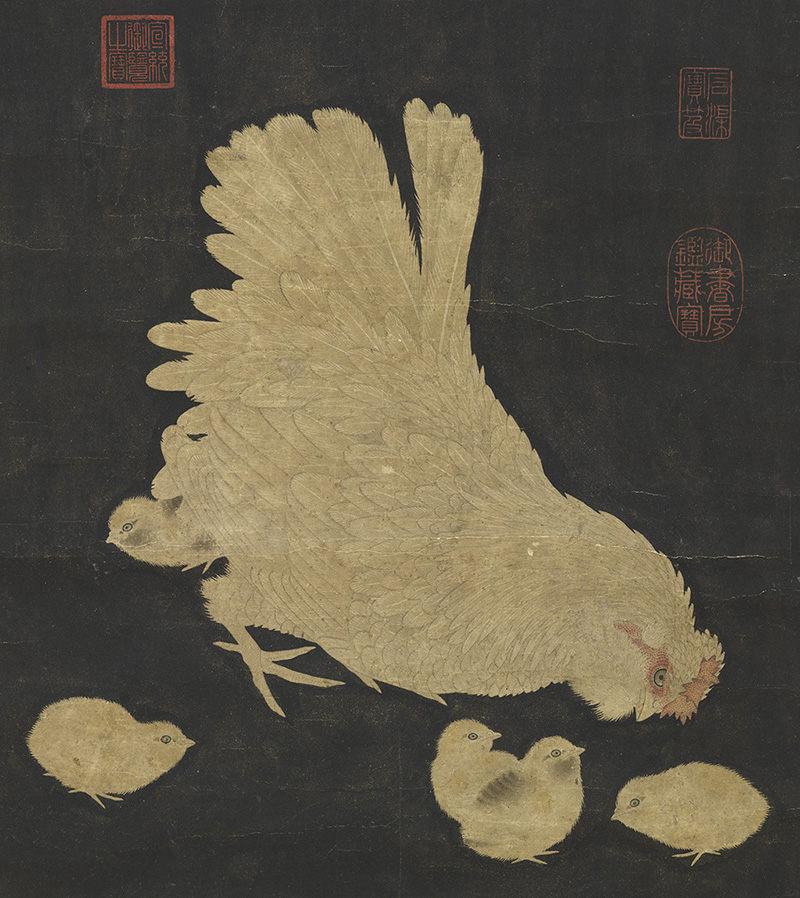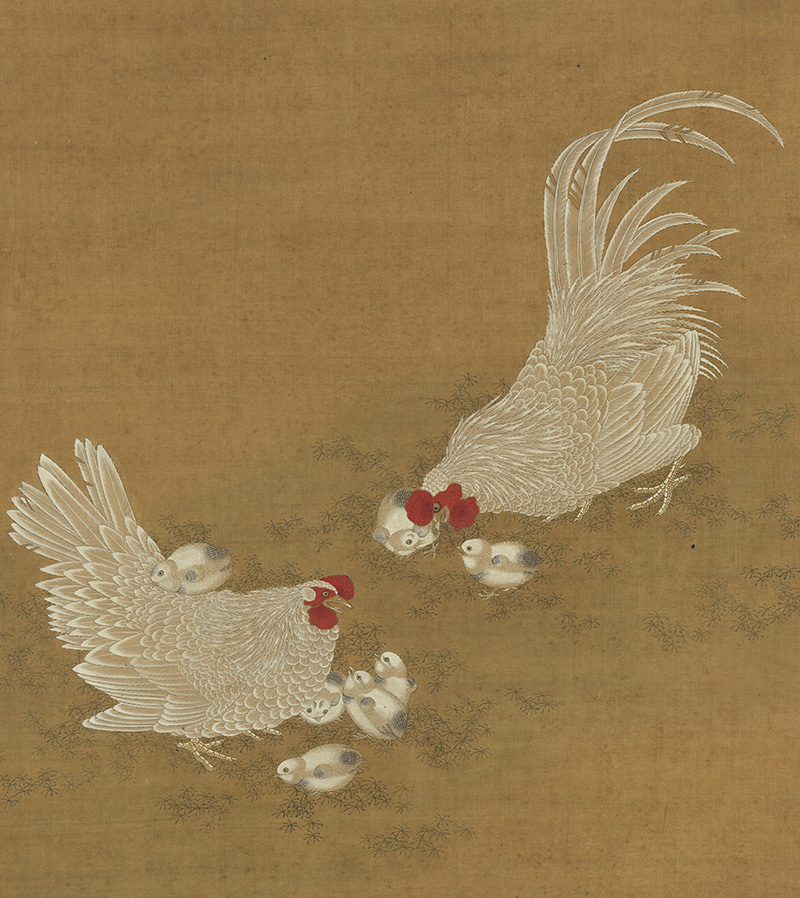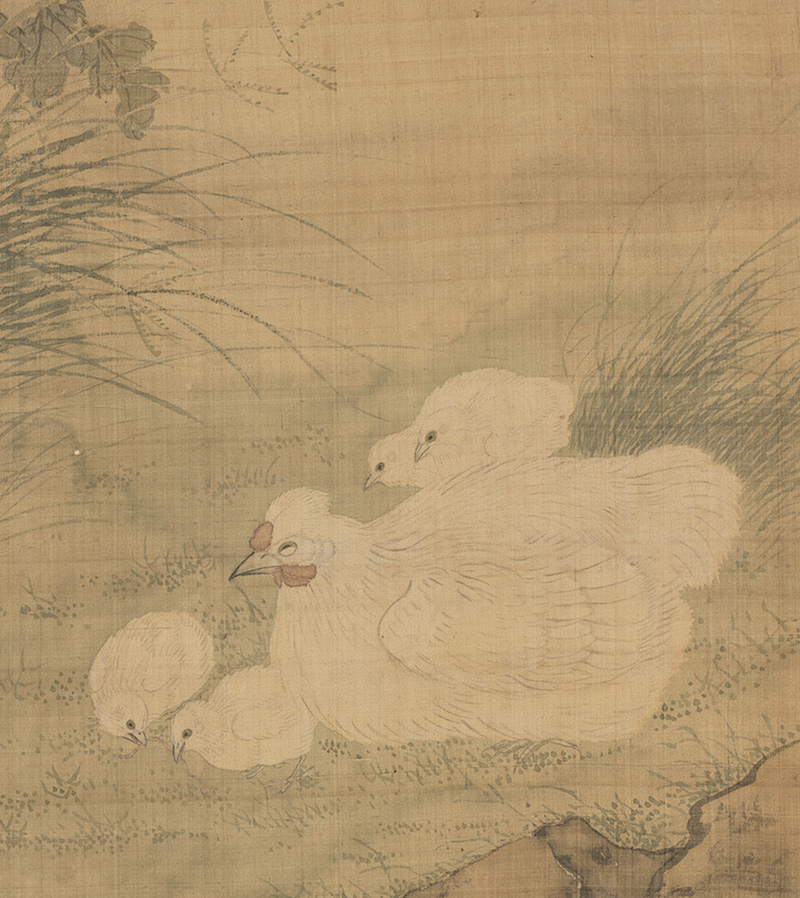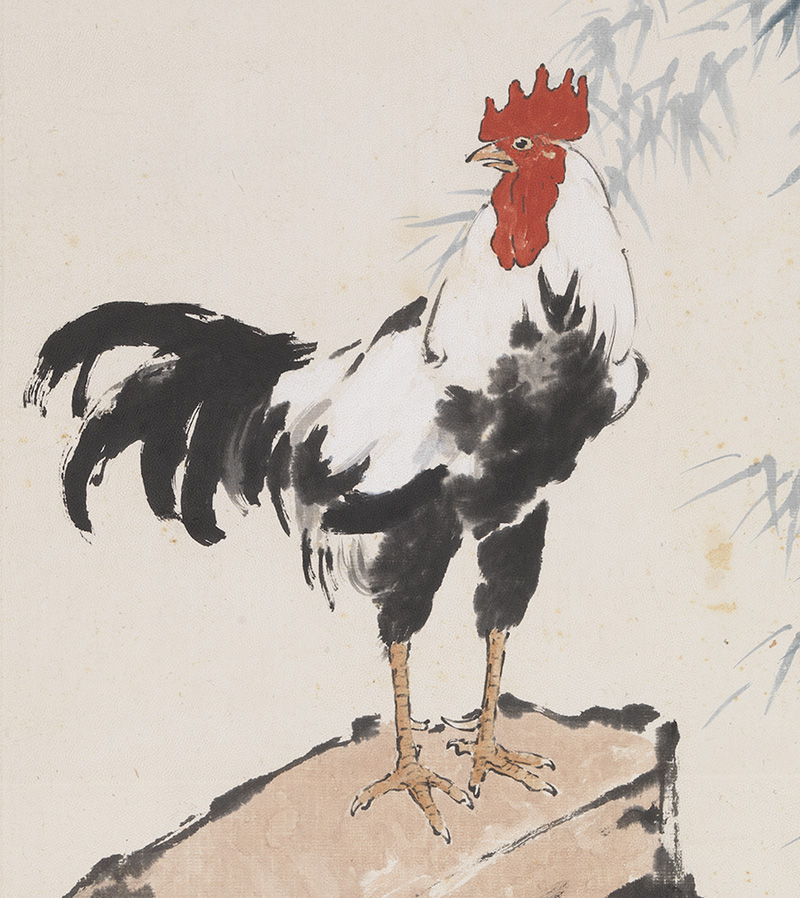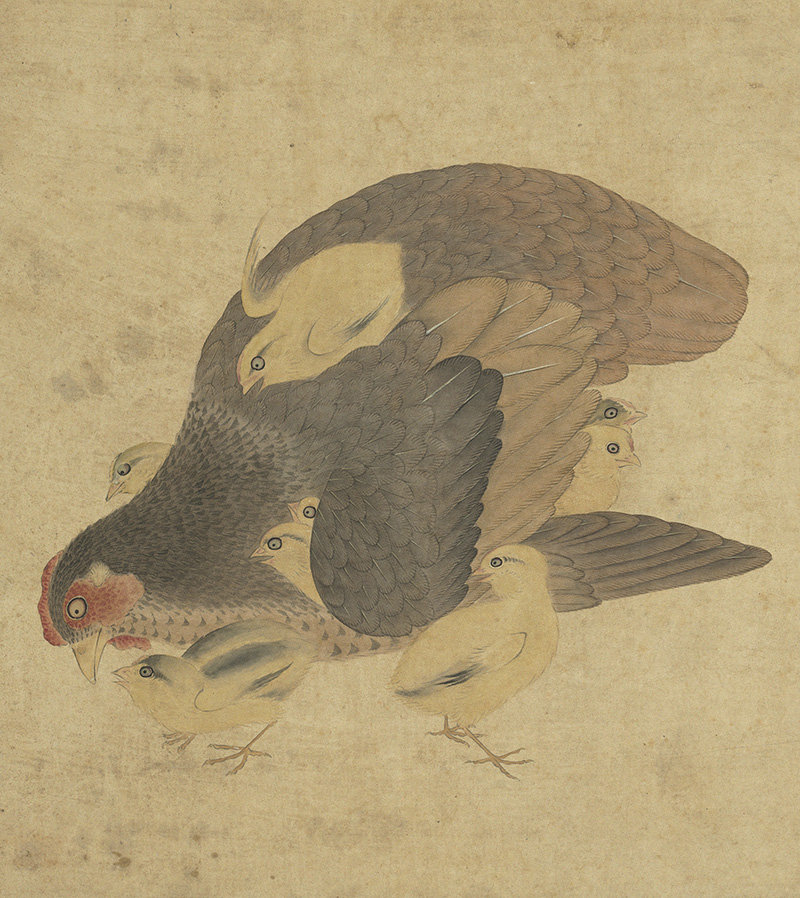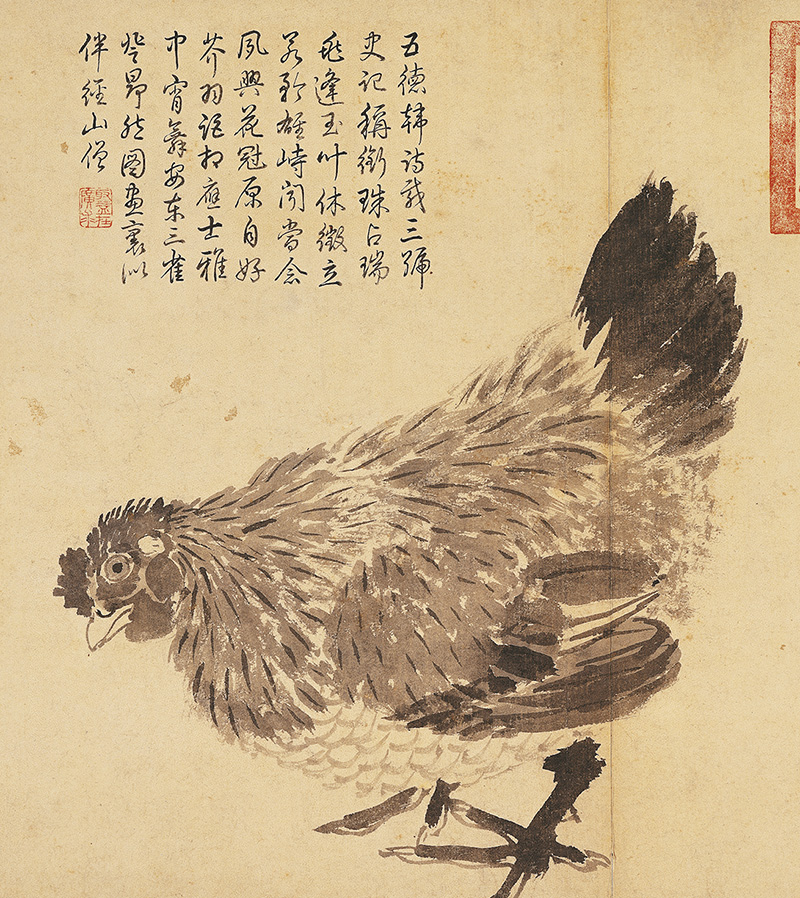The year 2017 corresponds to "dingyou" in the traditional cyclical calendar and the rooster in the Chinese zodiac, making it the "Year of the Rooster." In the Chinese language, the character for "chicken" is "ji," a homonym for "fortune." The first character in the binome for "rooster" is likewise a homonym for "merit" and "achievement," while the chicken's "crest" stands for "official" and its "call" for "fame." As a result, the ancients often considered the chicken as an auspicious animal symbolizing "meritorious renown" and "promotion in rank and office."
For millennia, people have raised chickens, making them an inseparable part of the economy with deep implications in life. Archaeologists, for example, have found the remains of chicken bones in ancient Chinese civilization. Evidence for the domestication of chickens dates no later than the Shang dynasty, as seen in excavations at the ruins of its last capital, Yin, located at modern Anyang City, Henan Province. Over thousands of years, the role of the chicken has evolved in thought and culture, at one point its egg serving as a symbol for the creation of all in Chinese genesis mythology. The chicken then became a spirit guardian capable of warding off evil and also the "Sun Bird" calling the sun to rise in the east. The form and habits of the chicken have been employed over the ages to express abstract beliefs and customs as well as other symbolic content, including ideas on how the cosmos operates. Afterwards, the rooster also became venerated as the "Bird of Virtues" for possessing the qualities of civil talent, military skill, courage, benevolence, and fidelity. Therefore, even in the worst of times, the rooster came to stand for faith and determination, being a model for good character among people. These descriptions trace a long and changing course of thought evolving from primitive religion to lofty cultural notions.
The special exhibition here focuses on this animal in the Chinese zodiac to welcome the new lunar year in 2017, the National Palace Museum having selected seventeen of the finest works in its collection on the subject of chickens. It is hoped that bringing these paintings (and one silk textile) together gives rise to auspicious feelings of joy and prosperity among audiences in the Year of the Rooster.

